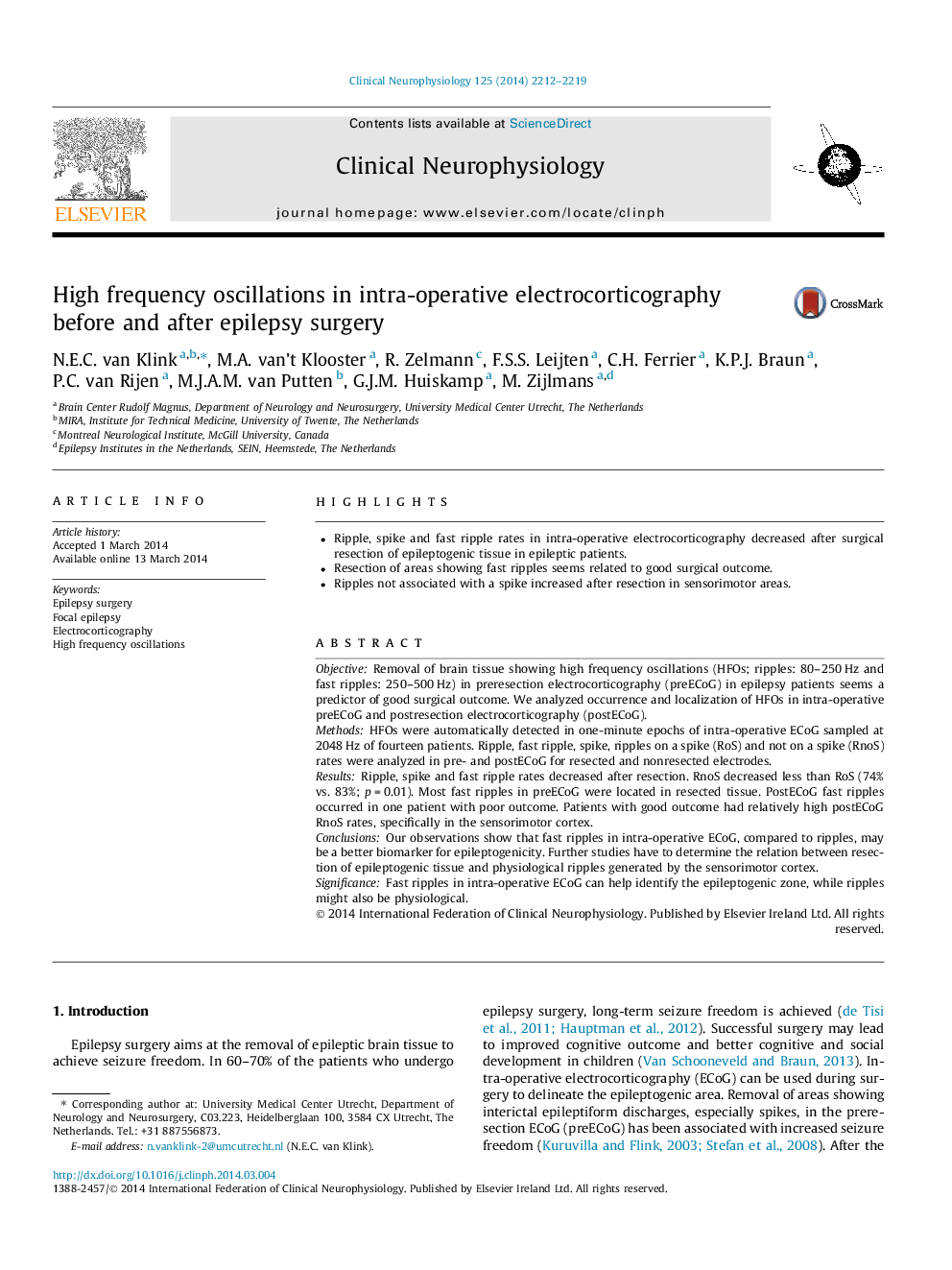| Article ID | Journal | Published Year | Pages | File Type |
|---|---|---|---|---|
| 3043668 | Clinical Neurophysiology | 2014 | 8 Pages |
•Ripple, spike and fast ripple rates in intra-operative electrocorticography decreased after surgical resection of epileptogenic tissue in epileptic patients.•Resection of areas showing fast ripples seems related to good surgical outcome.•Ripples not associated with a spike increased after resection in sensorimotor areas.
ObjectiveRemoval of brain tissue showing high frequency oscillations (HFOs; ripples: 80–250 Hz and fast ripples: 250–500 Hz) in preresection electrocorticography (preECoG) in epilepsy patients seems a predictor of good surgical outcome. We analyzed occurrence and localization of HFOs in intra-operative preECoG and postresection electrocorticography (postECoG).MethodsHFOs were automatically detected in one-minute epochs of intra-operative ECoG sampled at 2048 Hz of fourteen patients. Ripple, fast ripple, spike, ripples on a spike (RoS) and not on a spike (RnoS) rates were analyzed in pre- and postECoG for resected and nonresected electrodes.ResultsRipple, spike and fast ripple rates decreased after resection. RnoS decreased less than RoS (74% vs. 83%; p = 0.01). Most fast ripples in preECoG were located in resected tissue. PostECoG fast ripples occurred in one patient with poor outcome. Patients with good outcome had relatively high postECoG RnoS rates, specifically in the sensorimotor cortex.ConclusionsOur observations show that fast ripples in intra-operative ECoG, compared to ripples, may be a better biomarker for epileptogenicity. Further studies have to determine the relation between resection of epileptogenic tissue and physiological ripples generated by the sensorimotor cortex.SignificanceFast ripples in intra-operative ECoG can help identify the epileptogenic zone, while ripples might also be physiological.
